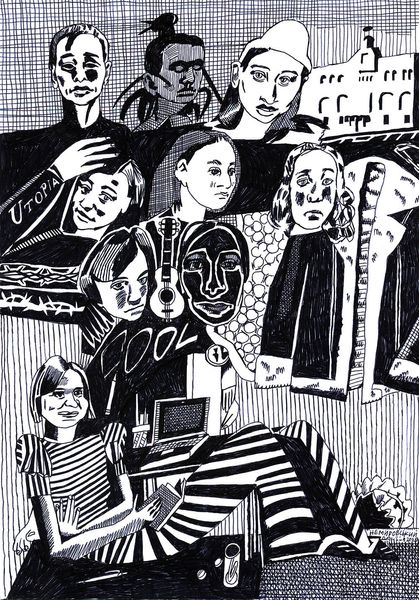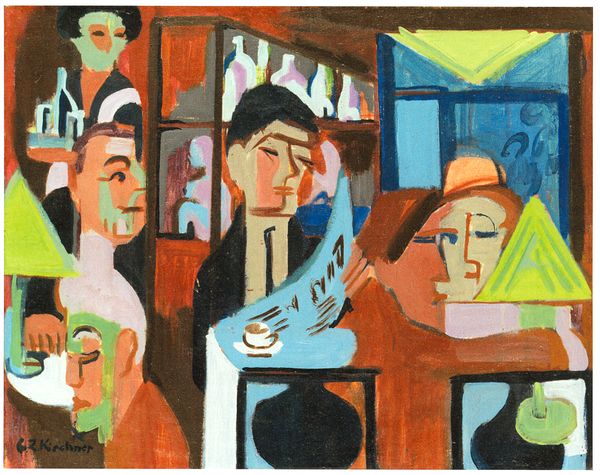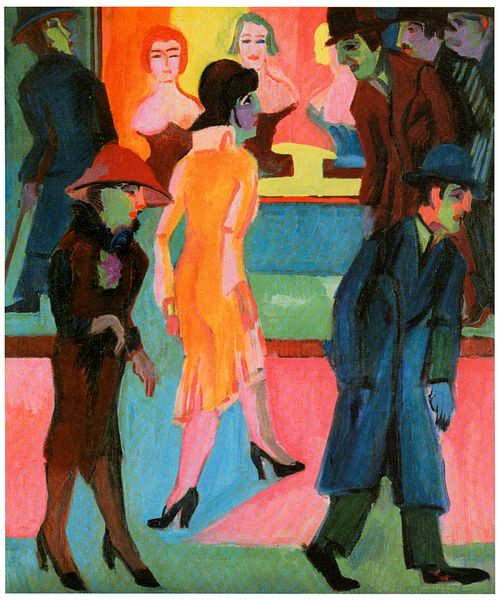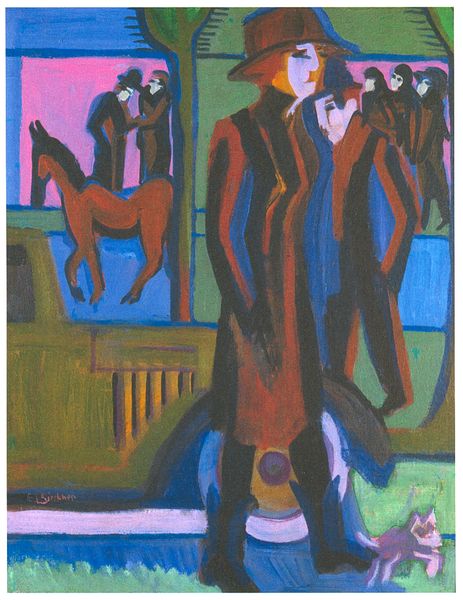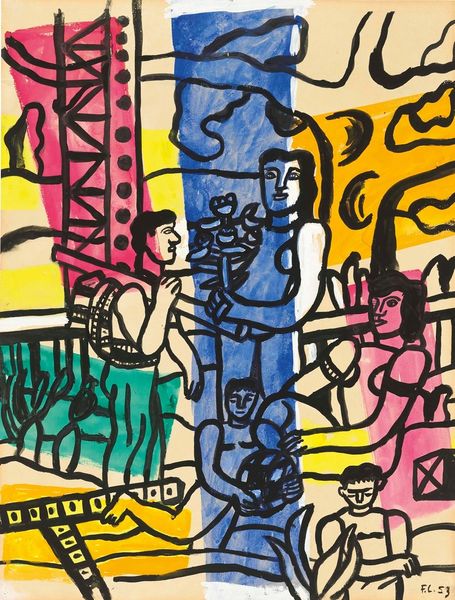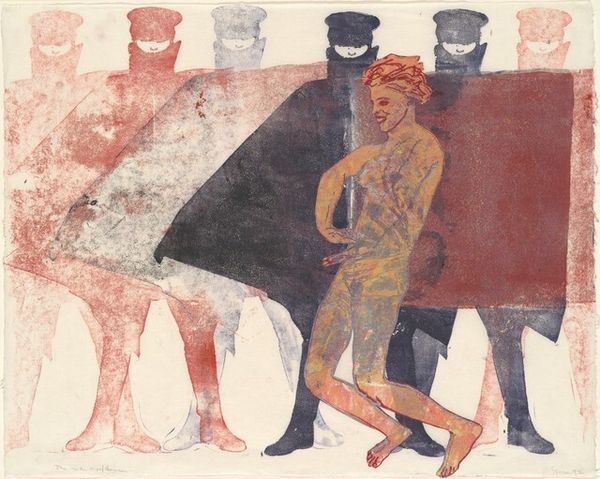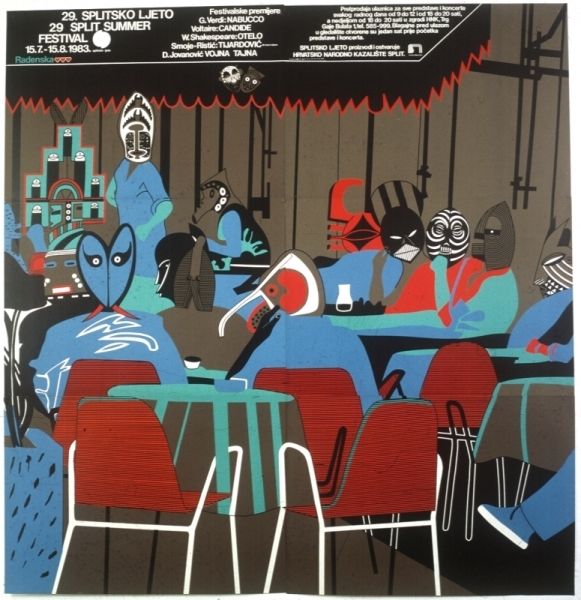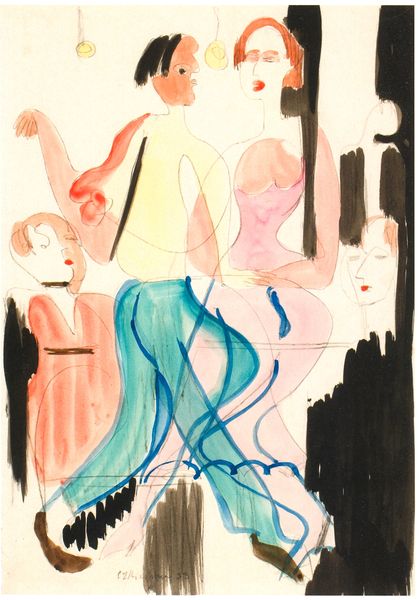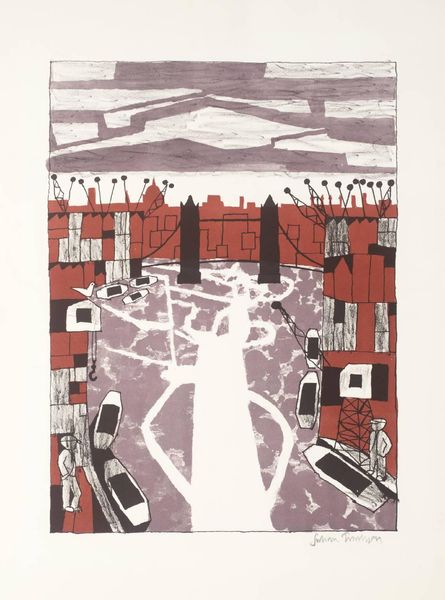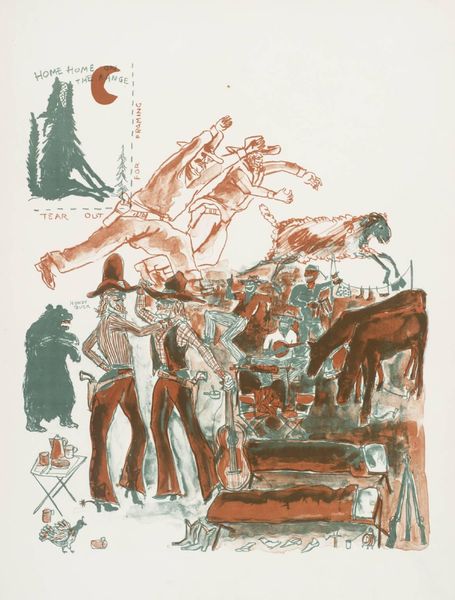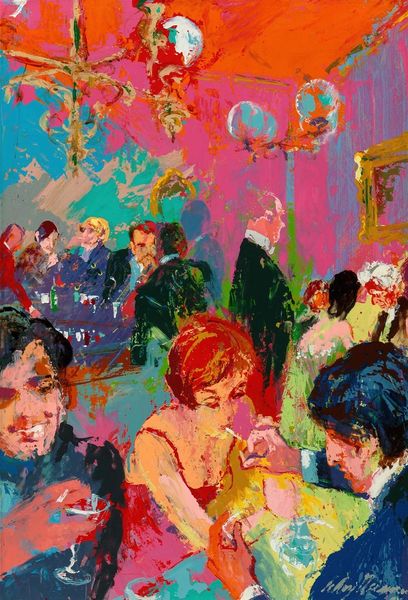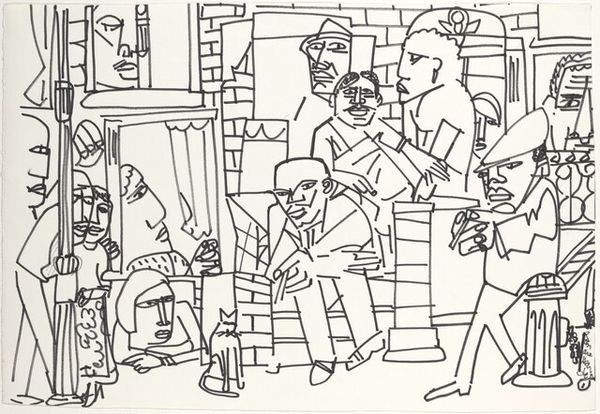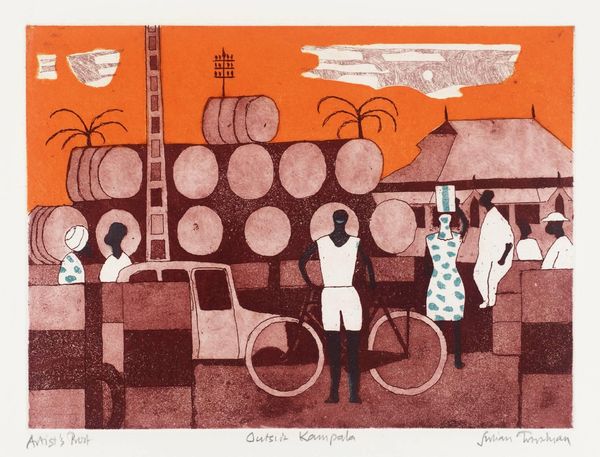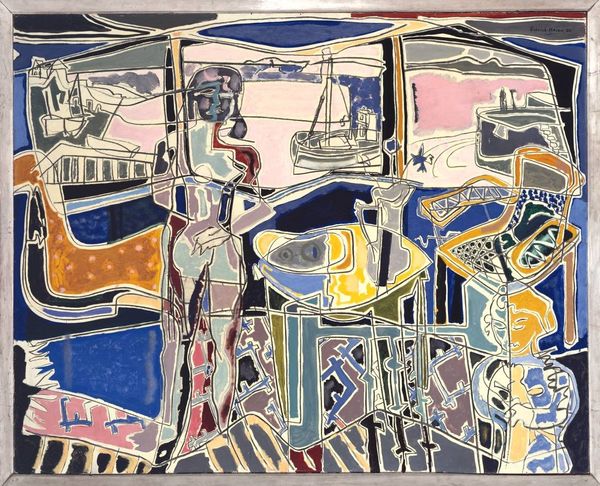
Dimensions: height 200 mm, width 263 mm, height 294 mm, width 360 mm
Copyright: Rijks Museum: Open Domain
Editor: Here we have Kawakami Sumio’s "Pedestrians in Ginza", a woodblock print from 1945, held at the Rijksmuseum. There's something both lively and haunting about it. The figures are stylized and the colors are quite bold. What do you see in this piece? Curator: Immediately, the flattening of perspective jumps out, typical of Ukiyo-e traditions, yet repurposed through a distinctly modern lens. What do these stark color choices – the purples, blues, and grays – evoke in you, considering the historical context of 1945? Editor: There is a melancholic or sombre feel perhaps; with those colors maybe referencing loss in Japan post-war. Curator: Exactly. The artist has used symbolic color that could refer to both resilience and grief, encoding emotional experience for a culture in transition. What about the blank faces of the figures? What symbols are hidden there? Editor: A removal of individual expression? Is it that individuality wasn't as valued then in Japanese society, compared to our modern Western values of standing out? Curator: It could signify a collective identity, but equally, a mask concealing individual trauma or uncertainty during the reconstruction era. These figures seem to embody a sense of stoicism but maybe a need for a renewed social structure. Does the cityscape contribute to your feelings? Editor: It definitely enhances it. The buildings feel ghost-like. Curator: The buildings mirror the uncertainty felt during a period of rebuilding a city in recovery. The artist gives memory to a historical point by embedding symbolic colors and imagery. What have you learned looking closely at Kawakami's work? Editor: I never realized prints could hold so many historical and emotional symbols.
Comments
No comments
Be the first to comment and join the conversation on the ultimate creative platform.
